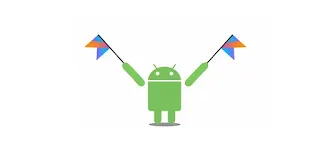11. Float data type in Kotlin programming language
🧮 Float Data Type in Kotlin: Comprehensive Guide for Developers
Welcome, Kotlin developers! Understanding the float data type is crucial for precise numeric operations in your programming journey. This comprehensive guide will dive deep into the intricacies of floating-point numbers in Kotlin, exploring their characteristics, usage, and best practices.
📌 What is a Float in Kotlin?
In Kotlin, a float is a 32-bit floating-point number type that allows representation of decimal values with single precision. It follows the IEEE 754 standard for floating-point arithmetic and provides a way to handle fractional numbers efficiently.
// Float declaration examples
val price: Float = 19.99f
val temperature: Float = 36.6f
val scientificValue = 6.022e23f // Scientific notation
🔍 Key Characteristics of Float
- Size: 32 bits
- Range: ±1.4E-45 to ±3.4E+38
- Precision: 6-7 decimal digits
- Suffix: 'f' or 'F' is required for float literals
💡 Float vs Double: Understanding the Difference
While both are floating-point types, they differ in precision and memory usage:
// Float (single precision)
val floatValue: Float = 3.14f // 32 bits
// Double (double precision)
val doubleValue: Double = 3.14 // 64 bits
🚀 Type Conversion and Precision
Kotlin provides explicit conversion methods between numeric types:
// Explicit conversion
val intValue = 42
val floatFromInt: Float = intValue.toFloat()
// Widening conversion (implicit)
val doubleFromFloat: Double = floatValue
⚠️ Common Pitfalls and Considerations
🏋️ Practical Exercises
Exercise 1: Basic Float Operations
fun calculateArea(radius: Float): Float {
return Math.PI.toFloat() * radius * radius
}
Exercise 2: Temperature Conversion
fun celsiusToFahrenheit(celsius: Float): Float {
return (celsius * 9/5f) + 32f
}
Exercise 3: Numeric Precision Check
fun demonstratePrecision() {
val a: Float = 0.1f
val b: Float = 0.2f
println(a + b) // Not exactly 0.3
}
Exercise 4: Safe Comparison
fun compareFloats(a: Float, b: Float): Boolean {
return abs(a - b) < 0.0001f
}
Exercise 5: Rounding Float Values
fun roundToTwoDecimals(value: Float): Float {
return round(value * 100f) / 100f
}
🏁 Conclusion
Mastering the float data type in Kotlin requires understanding its nuances, limitations, and appropriate use cases. By following best practices and being mindful of precision issues, you can leverage floats effectively in your development projects.
📱 Stay Updated with Android Tips!
Join our Telegram channel for exclusive content, useful tips, and the latest Android updates!
👉 Join Our Telegram ChannelGet daily updates and be part of our growing Android community!


Comments
Post a Comment